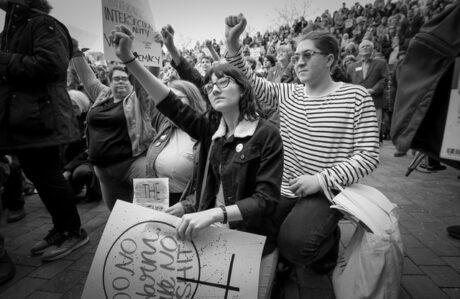The Women’s March on Washington was a historical event. The protests were the most significant mass electoral participation in U.S. history. This has not been forgotten. Some readers may agree with the Women’s March, while others disagree. Regardless, it is essential to know that women and other minorities have struggled to gain equality for centuries – even to reclaim simple aspects of their identities.
This article has outlined some interesting historical facts regarding the Women’s Movement below.
Women’s March took place in 1789 at Versailles
The October March, or the ‘March on Versailles’ as it is sometimes known, was one of the earliest events in the French Revolution. It began in Paris, and the event inspired many people. The Parisian crowd had no choice but to take action, and soon, the city was flooded with protesters.
However, not all the participants were inspired by the event, and a few died in the violent clashes. In the weeks leading up to the Women’s March on Versailles, the women of Paris gathered at local markets.
According to Lumen Learning, the rising bread prices and poor economic policies had pushed the price of bread to skyrocket. As a result, the women swarmed the city hall and seized weapons, and ate every scrap of food in sight. Their peaceful protests helped spark the French Revolution, which would change the face of the world as we know it today.
The 1913 Women’s Suffrage Procession
In 1913, the Women’s Suffrage Procession featured suffragettes of color. There were over forty black suffragettes in attendance. Each state had its black delegation, and each section led a banner.
They embodied the end of racial justice in conjunction with the achievement of the right to vote for women. Delta Sigma Theta sorority members, 25 black undergraduates, and six graduates led the march.
Native American lawyers Mary Church Terrell and Marie Louise Bottineau-Baldwin also marched as their respective delegations. The 1913 Women’s Suffrage Parade was a huge victory for the suffrage movement.
The event, a symbolic victory in the suffrage movement, helped gain the 19th Amendment momentum. Many congressional members and suffrage activists attended the march in Washington, D.C. This event gave the women’s suffrage movement a new impetus to continue its voting mission.
Strike for Equality in 1970: Women’s Rights
The Women Strike for Equality in 1970 was a successful campaign for equal rights and a fight against injustice. It was led by a group of feminists who wanted to see women gain the right to vote.
This was a cause close to their hearts, and Betty Friedan, a well-known feminist, proposed a one-day strike and marched down Fifth Avenue to mark the 50th anniversary of women’s suffrage and equal demand rights for women. The National Organization for Women declined the idea, but the campaign gained momentum.
In 1976, Women’s March For Peace
The first Women March for Peace took place in Ireland in 1976. The protest was peaceful, but the Republican opposition threw stones at it and broke the silence. Despite these protesters’ peaceful intentions, they were attacked physically by the Republican government and the police.
Fortunately, the women could rally their supporters and win the election in 1977. However, not everyone welcomed the protest. Not everyone was as enthusiastic as the organizers. Throughout autumn 1976, Peace People marches took place in dozens of cities and towns.
Tens of thousands of people joined the demonstrations. During one of the first marches, the protesters were attacked by IRA members. Several marches were disrupted, and many of them were pelted with rocks. Hundreds of thousands of women participated in the third march. These events inspired other peace movements across the world.
2017 Women’s March
The Women’s March in 2017 was an international day of protest on January 21, 2017. The event sparked by President Donald Trump’s anti-woman comments became the largest protest in U.S. history.
It became the most popular and widespread one-day gathering of people in the United States. The march organizers said that their goal was to show that “women’s rights are human rights” had printed thousands of protestor signs and women’s march shirts carrying the message. In response, Trump apologized for his remarks and vowed to change his policies.
Conclusion
The Women’s March is absolutely a historical event and part of a rich tapestry of history. Women’s rights are lacking much-deserved attention, even in recent decades. So to see this coming to a head and being given some significant coverage is scarce in the scheme of things.
Thanks to McKenzie Jones
5 Historical Facts about the Women’s March
March 2, 2024 by






